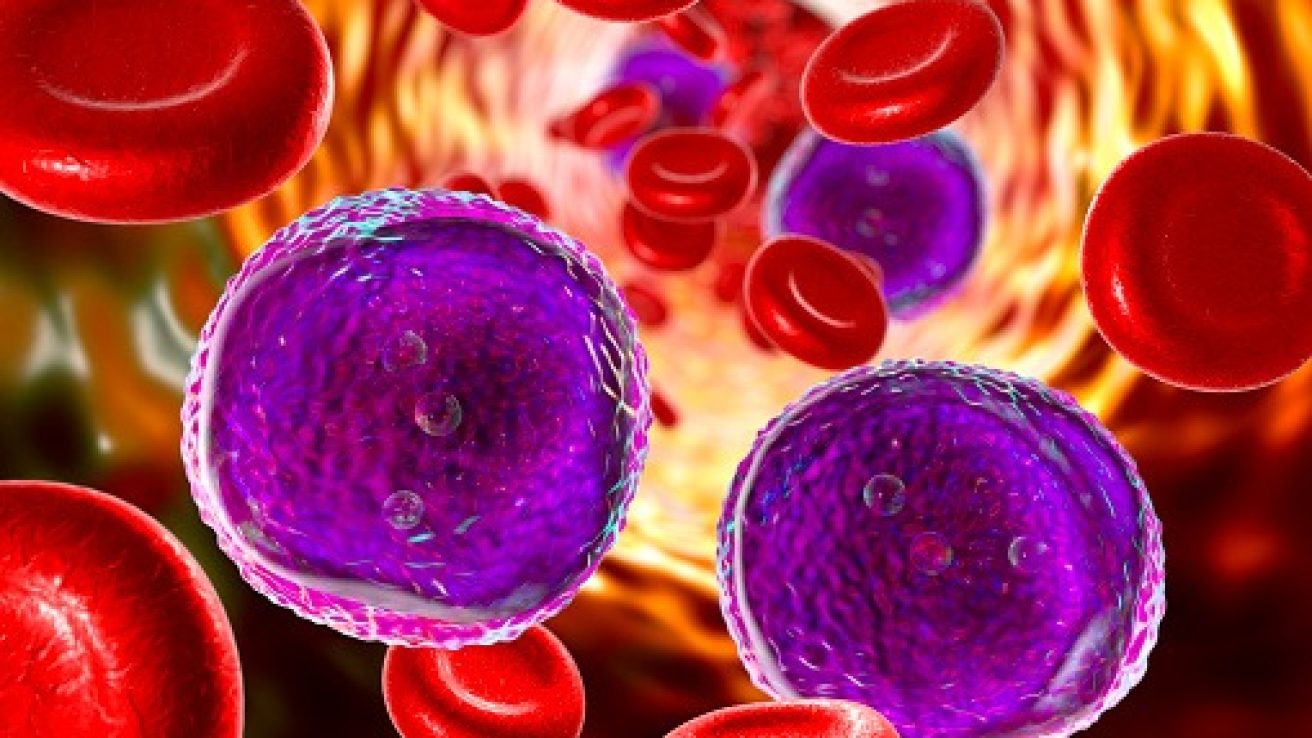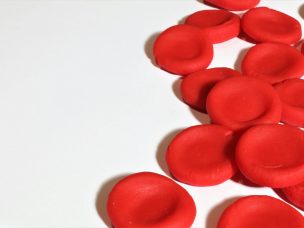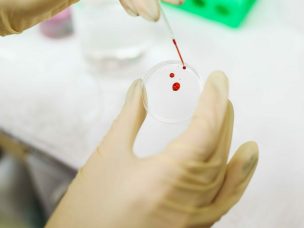Chronic lymphocytic leukemia (CLL) is a cancer that occurs when the bone marrow makes too many lymphocytes, a type of white blood cell. CLL usually grows slowly compared to other leukemias, and it may not cause symptoms for some time.
CLL is one of four main types of leukemia. It is the second most common type of leukemia in adults; most people with CLL are middle-aged or older. The disease is very rare in children.
Normally, a person’s immature blood stem cells develop into myeloid and lymphoid stem cells. The myeloid cells become mature blood cells: white blood cells, red blood cells, and platelets. Lymphoid stem cells develop into three types of infection-fighting lymphocytes:
- B lymphocytes, which make antibodies to help protect the body from germs
- T lymphocytes, which can destroy virus-infected cells, foreign cells, and cancer cells
- Natural killer cells, which also can kill cancer cells and viruses.
In CLL, too many blood stem cells turn into abnormal lymphocytes. These cells do not function properly and they do not undergo normal removal from the blood stream. Even in high numbers, they cannot fight infection as well as normal cells. As they pile up in the blood and bone marrow, they crowd out healthy white blood cells, red blood cells, and platelets. This can result in infection, anemia, and easy bleeding. CLL most often develops from B lymphocytes.
CLL begins in the bone marrow but then, as the abnormal lymphocytes multiply, they typically are released into the blood stream. In time, it can spread to other parts of the body that normally contain lymphocytes, such as the lymph nodes (in the neck, abdomen, and groin, under the arms, and around the collarbone), as well as the liver and the spleen. These tissues may then become enlarged.
Certain factors may increase a person’s chance of developing CLL. These include
- having relatives with CLL or cancer of the lymph system
- being exposed to certain chemicals
- being middle-aged or older
- being male and white
- being of North American or European descent.
Keep in mind, however, that having one or more risk factors for CLL does not mean you will develop the disease.
Symptoms
People with CLL often have no signs or symptoms in the early stages of the disease. It may be discovered during a routine blood test or checkup, or when a blood test is done for another health problem.
Possible signs of CLL include
- weakness and fatigue
- swollen lymph nodes in the neck, underarm, stomach, or groin
- shortness of breath during normal activity
- pain or sense of fullness below the ribs
- fever
- unexplained weight loss
- night sweats
- bruising or bleeding easily
- recurrent infections.
These symptoms can be associated with other cancers and many non-cancerous conditions. Tell your doctor if you experience any of them.
Symptoms of advanced CLL occur when there is a shortage of healthy blood cells:
- People with a low red blood cell count may feel weak, tired, or short of breath during regular activity.
- People with too few platelets bruise and bleed easily.
- People lacking in normal white blood cells are prone to infections and fevers because their immune systems are not working properly. (Infections can range in seriousness from frequent colds and cold sores to pneumonia.) However, some people with CLL may have high white blood cell counts because of the build-up of lymphocytes.
Diagnosis
Symptoms such as fatigue, shortness of breath, or easy bruising can be signs of CLL and a physical exam should follow if a patient complains about these
Most often CLL can be diagnosed by a simple blood test. The first clue is an abnormally high number of lymphocytes. A pathologist can often confirm the diagnosis based on the presence of many abnormal-looking lymphocytes.
The leukemia cells in the blood can look a lot like low grade lymphoma cells. That’s why it may be difficult to distinguish CLL from this type of cancer of the lymph nodes. But both conditions develop slowly, and the treatment is often similar.
There are additional tests and procedures to diagnose CLL:
- Cytogenetic analysis. This test looks for specific changes in the chromosomes of CLL cells. For example, part of a chromosome, which contains genetic information, might be missing. (In most CLL cases, there is a change in at least one chromosome.) Knowing about chromosomal changes can help the hem onc choose a treatment or determine whether a treatment is working.
- Flow cytometry. This test uses light-sensitive dyes and lasers to look for certain characteristics in your cells. For example, specialists will check for tumor markers on the surface of your cells. The test can also help determine whether cancerous cells began from B lymphocytes or T lymphocytes.
- Lymph node biopsy. During this procedure, the clinician will locate the site on the skin that lies over the lymph node. After numbing the skin with a local anesthetic, he or she will make a small incision. The lymph node is removed and sent to a laboratory to be examined under a microscope.
- Bone marrow aspiration and biopsy. During this procedure, the doctor takes a small sample of bone and liquid bone marrow from the hipbone or breastbone with a long needle. A pathologist examines the sample under a microscope for such factors as the number of CLL cells and the patterns they make in the bone marrow.
here are five stages of CLL, ranging from Stage 0 to Stage IV. Stage 0 means that there are too many lymphocytes in the blood, but that the patient has no other symptoms of leukemia. At the other end of the spectrum, Stage IV means that there are too many lymphocytes and too few platelets. The patient may have anemia (not enough iron, caused by too few red blood cells) and enlarged lymph nodes, liver, or spleen. These stages may be classified as low-, intermediate-, and high-risk.
Refractory CLL is cancer that does not get better with treatment.
Expected Duration
CLL usually grows slowly, and people can live for long periods, sometimes for decades, without treatment. However, some cases of CLL grow relatively quickly and require early treatment.
Prevention
There is no known way to prevent CLL.
Treatment
CLL generally can’t be cured. The goals of treatment are to slow the buildup of CLL cells, maintain a patient’s health, and help the patient avoid infection. This is a chronic disease and patients can live for prolonged periods of time with minimal to no decrease in their quality of life.
Decisions about treating CLL depend on several factors. These include
- disease stage
- the person’s age and overall health
- blood cell counts (red and white blood cells and platelets)
- whether the person has symptoms
- whether the liver, spleen, or lymph nodes are enlarged
- the patient’s response to initial therapy
- whether the CLL has come back (recurred).
Patients with low-risk (stage 0) CLL that is not growing or growing slowly and who lack symptoms may wait to begin treatment—but continue with follow-up exams. This approach, called watchful waiting, allows the person to avoid the side effects of treatment until symptoms appear or change. However, problems caused by the disease, such as infection, are usually treated.
Patients with intermediate- and high-risk CLL (stages I–IV) who do not have symptoms may delay treatment while continuing to be observed. Treatment for faster-growing disease may include
- chemotherapy with or without steroids or monoclonal antibodies (human-made immune system proteins)
- several new drugs have become available that have improved the outlook for patients both for initial treatment and when other therapies have stopped working.
- radiation therapy to areas where the cancer is found
- a stem cell transplant, a procedure that involves replacing a person’s abnormal blood-forming cells with healthy ones
- surgery to remove the spleen
- antibiotics to treat infections.
Some people receiving CLL treatment may experience no side effects, while others face serious and long-lasting ones. Some possible side effects are
- anemia
- extreme fatigue
- infection
- nausea
- hair loss.
The disease and its treatment can lead to other complications. For example, you may develop another cancer in the future, or you may develop a condition in which your immune system attacks your own blood cells.
Several new drugs have recently been approved for CLL that potentially can induce and maintain a remission for a long period of time.
Source: Harvard Health Publishing










